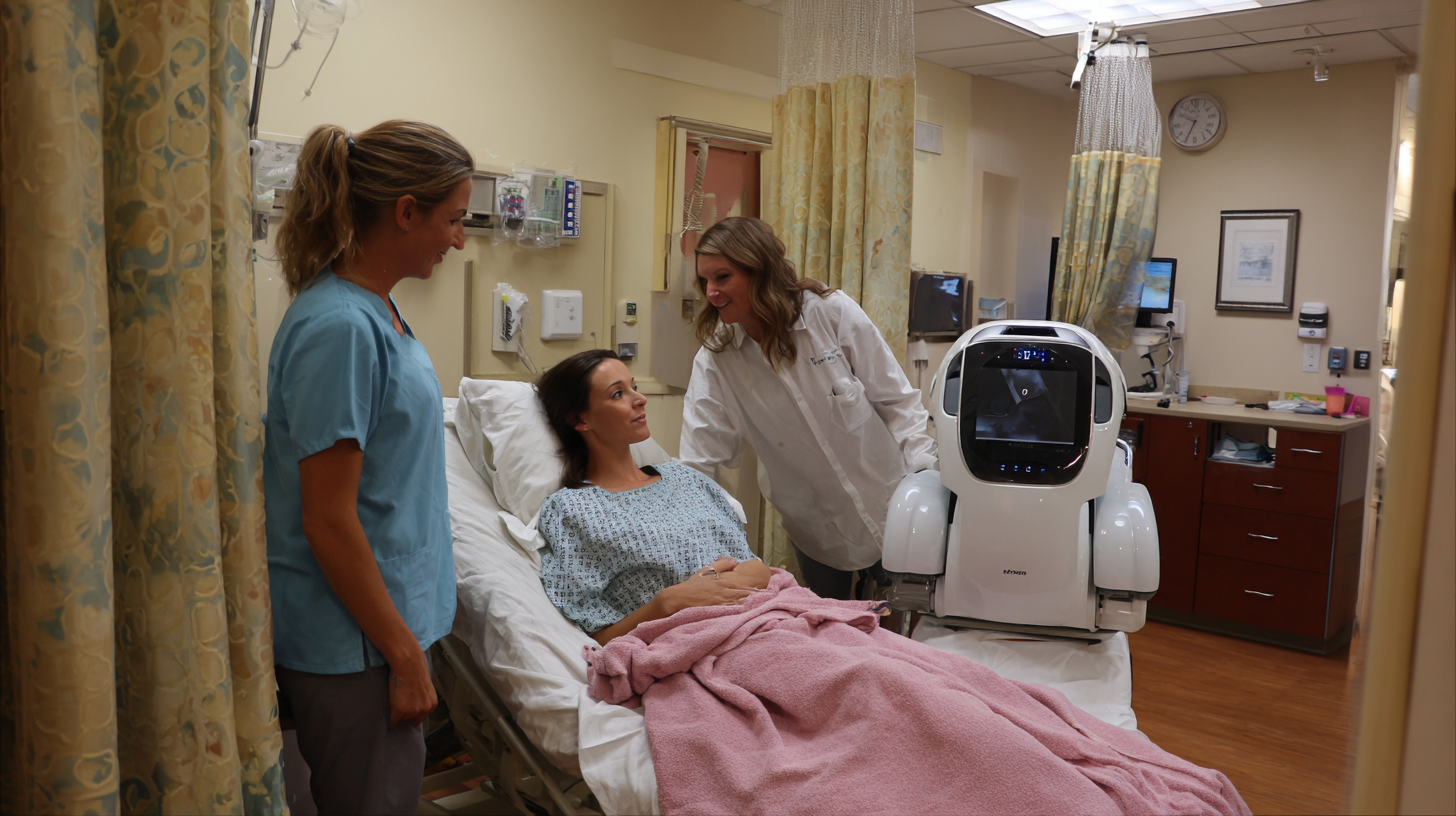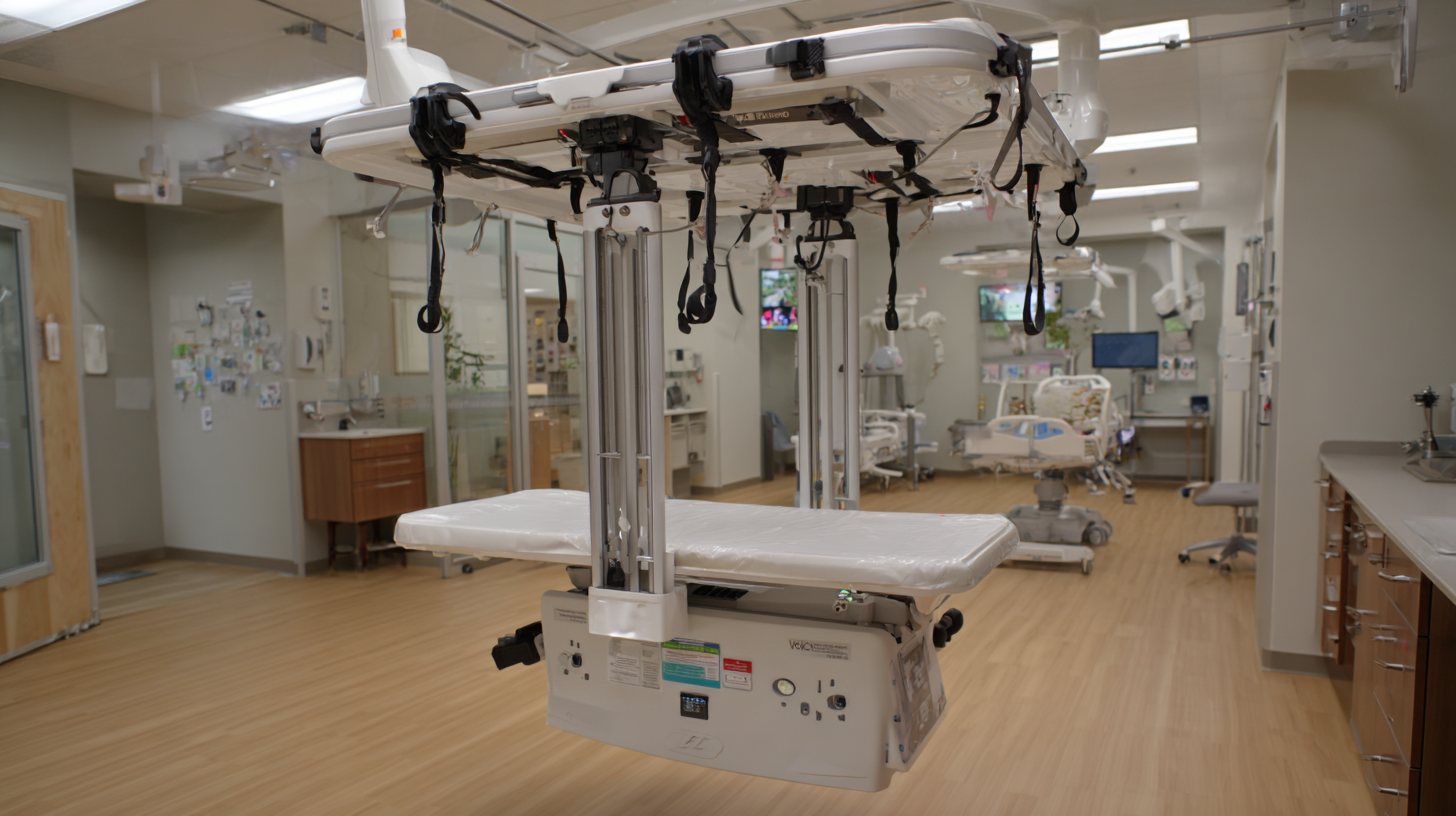Exploring Innovative Alternatives to the Best Patient Lift for Enhanced Care Solutions
As the healthcare industry evolves, so too does the need for advanced solutions that enhance patient care and mobility. The patient lift market is projected to grow significantly, with reports indicating an increase from $1.9 billion in 2020 to $2.9 billion by 2025, reflecting a compound annual growth rate (CAGR) of over 8% (Market Research Future, 2022). This growth underscores the critical role of patient lifts in improving the safety and comfort of both patients and caregivers. However, traditional patient lift mechanisms may not always meet the diverse needs of modern healthcare settings, prompting a search for innovative alternatives. In exploring these alternatives, we aim to identify tools and technologies that not only enhance lift functionality but also address the broader challenges faced by care providers in delivering optimal patient support.

Innovative Patient Lifts: Revolutionizing Mobility Solutions in Healthcare
Innovative patient lifts are at the forefront of revolutionizing mobility solutions in healthcare. These advanced devices not only enhance the safety and comfort of patients but also significantly reduce the physical strain on caregivers. Traditional lifts often required a cumbersome setup and could pose risks during transfers, whereas modern designs incorporate smart technology, making them more user-friendly and efficient. The integration of features such as adjustable height, ergonomic grips, and automatic lifting mechanisms allow for a smoother, more dignified mobility experience for patients.
Moreover, the rise of telehealth and remote monitoring has prompted innovations in patient lift design. Many new models are equipped with sensors that provide real-time data on a patient's mobility status, allowing healthcare teams to respond promptly to changes in condition. This proactive approach minimizes the risk of complications associated with immobility, fostering better recovery outcomes. As the healthcare landscape continues to evolve, embracing these innovative patient lifts will be essential in providing enhanced care solutions that prioritize both patient comfort and caregiver well-being.

The Importance of Patient Lifts in Modern Care Settings
In modern care settings, patient lifts play a crucial role in enhancing the quality of care provided to individuals with mobility challenges. These devices not only facilitate the safe transfer of patients but also significantly reduce the risk of injury for both caregivers and patients. The importance of patient lifts is underscored by their ability to improve patient dignity and comfort during transfers, creating a more positive experience in healthcare environments.
When considering a patient lift, it’s essential to assess the specific needs of your facility. Tip 1: Ensure you choose a lift that is appropriate for the weight and size of your patients. Different models provide various weight capacities and lifting mechanisms, so selecting the right one can enhance safety and functionality. Tip 2: Evaluate the ease of use for your staff. An intuitive design can facilitate smoother operations, allowing caregivers to focus more on patient care rather than equipment handling.

Comparative Analysis: Best Patient Lifts vs. Emerging Alternatives
In the healthcare sector, choosing the right patient lift can significantly impact both caregiver efficiency and patient comfort. Traditional patient lifts, like ceiling-mounted systems and mobile lifts, have long been considered the gold standard, with reports from the American Journal of Nursing indicating a 30% reduction in caregiver injuries when using advanced lift systems. However, emerging alternatives are gaining traction, promising not only to enhance safety but also to improve the overall care experience.
Innovative solutions, such as robotic-assisted lifts and ergonomic designs, are revolutionizing the way caregivers assist patients. A 2022 study by the Healthcare Technology Innovation Center revealed that robotic lifts can decrease the time spent on transfers by up to 50%, allowing caregivers to focus more on patient interaction and less on manual handling. Additionally, new lift designs featuring adjustable heights and improved weight distribution provide enhanced ergonomics, resulting in less strain on caregivers and an overall more comfortable experience for patients. As we compare these emerging alternatives to traditional patient lifts, the shift towards innovative technology emerges as a vital component in shaping the future of patient care.
Integrating Technology: Smart Lifts for Enhanced Patient Engagement
In the evolution of patient care, integrating technology into daily practices has become essential for enhancing patient engagement and improving outcomes. Smart lifts represent a significant advancement in this area, enabling caregivers to assist patients more effectively while also giving patients a sense of control during their transfers. These innovative devices often come equipped with user-friendly interfaces that allow patients to engage actively in the assistive process, promoting autonomy and dignity.
When considering the implementation of smart lifts, it is crucial to select models that incorporate features such as adjustable height settings and intuitive controls. This ensures accessibility for both patients and caregivers, reducing the risk of injury and increasing comfort during transfers. Furthermore, facilities should provide training for staff on how to utilize these lifts efficiently, which can contribute to smoother operations and better patient experiences.
For facilities exploring innovative patient lift alternatives, staying updated on the latest technology is key. Engaging with manufacturers and attending healthcare technology expos can provide insights into emerging trends. Additionally, soliciting feedback from both patients and caregivers about their experiences with different lifts can guide future purchasing decisions, ensuring that the chosen solution meets the specific needs of users.
Innovative Alternatives in Patient Lift Technology
Future Trends in Patient Lifting Devices and Their Impact on Care Quality
The landscape of patient lifting devices is evolving, driven by advancements in technology and an increasing focus on care quality. Recent studies indicate a rising trend towards smart patient lifts, which are equipped with sensors and automation features. According to the 2022 report by the Global Health Device Market, the smart patient lifts market is projected to grow by over 15% annually, emphasizing the demand for enhanced safety and efficiency in patient care. These innovations not only reduce the physical strain on caregivers but also significantly improve patient comfort and security during transfers.
When considering alternatives to traditional lifting devices, it’s essential to assess their impact on care quality. For instance, using powered lifts can minimize the risk of injuries to both caregivers and patients. Furthermore, many advanced devices now feature integrated communication systems that facilitate real-time interactions among healthcare providers.
**Tip:** When selecting a patient lifting device, prioritize those with ergonomic designs and automated features that can adapt to various patient needs.
As technology continues to advance, the implementation of artificial intelligence and data analytics in patient lifting devices is expected to further streamline operations and enhance care. Hospitals that invest in these innovative solutions may see notable improvements in both staff efficiency and patient outcomes.
**Tip:** Regular training for staff on new patient lifting technologies can enhance their confidence and competency, ultimately leading to better care quality.
Exploring Innovative Alternatives to the Best Patient Lift for Enhanced Care Solutions - Future Trends in Patient Lifting Devices and Their Impact on Care Quality
| Feature | Traditional Patient Lifts | Innovative Patient Lifts | Impact on Care Quality |
|---|---|---|---|
| Weight Capacity | 350 lbs | 500 lbs | Increased versatility for heavier patients |
| Mobility | Manual | Battery powered | Reduced physical strain on caregivers |
| Adjustability | Limited | Highly adjustable | Better positioning for comfort and safety |
| Ease of Use | Moderate | User-friendly interface | Increased efficiency in care |
| Safety Features | Basic | Advanced sensors | Enhanced patient safety and reduce accidents |
